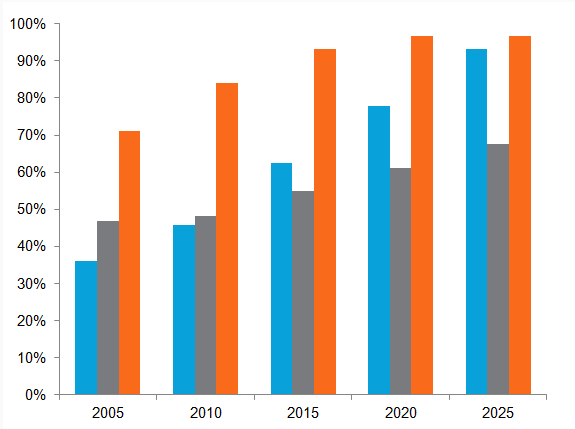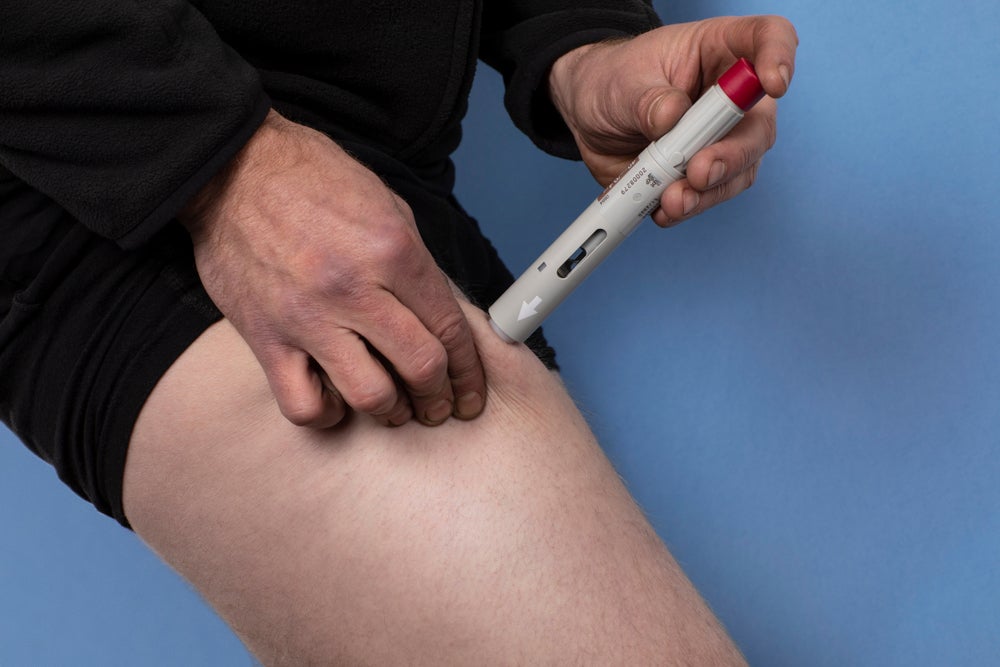
In 2015, there were approximately 37 million people living with HIV, two million new infections of HIV, and one million deaths due to AIDS-related illnesses worldwide. Treatment coverage varies depending on where a person lives, but you may be surprised to find that the US does not have the best coverage.
The human immunodeficiency virus (HIV) weakens the immune system, leaving an infected individual more vulnerable to other illnesses and impairing their ability to fight off infections. Antiretroviral therapy (ART) can slow disease progression and reduce viral load so that an infected individual is less likely to pass on HIV to others. GlobalData epidemiologists forecast that by 2025 the proportion of diagnosed prevalent cases of HIV on ART will have reached 93 percent in Brazil, compared with 97 percent in the UK and just 67 percent in the US.
The UK has historically high coverage of ART and has continued to see gains in recent years. Brazil has offered free universal access to ART to those diagnosed with HIV, and now offers treatment regardless of the stage of disease as part of a “test and treat” policy. Understandably, coverage of ART in Brazil has increased substantially. In the US, ART coverage is low in comparison with other Western countries such as the UK, and data suggest that by 2012 coverage in Brazil was greater than in the US. A large proportion of people testing positive for HIV in the US are not linked to health services, and only small improvements in this have been reported.
The figure below compares the estimated proportion of diagnosed prevalent cases of HIV treated with ART in Brazil, the US, and the UK from 2005 to 2025. Estimates are based on analyzed trends in historic data. In Brazil, coverage of ART in diagnosed prevalent cases of HIV is expected to increase significantly in coming years, and by 2025 is expected to be very similar to that in the UK. While coverage in the US is still expected to increase, it will be at a much slower pace, and by 2025 we expect there to be a large gap between coverage in the US and that the UK and Brazil.

See Also:
Details about the trend analysis and other discussions of HIV epidemiology can be found in the EpiCast Report: Human Immunodeficiency Virus (HIV) – Epidemiology Forecast to 2025 and the EpiCast Model: Human Immunodeficiency Virus (HIV) – Epidemiology Forecast to 2025.
How well do you really know your competitors?
Access the most comprehensive Company Profiles on the market, powered by GlobalData. Save hours of research. Gain competitive edge.

Thank you!
Your download email will arrive shortly
Not ready to buy yet? Download a free sample
We are confident about the unique quality of our Company Profiles. However, we want you to make the most beneficial decision for your business, so we offer a free sample that you can download by submitting the below form
By GlobalData



